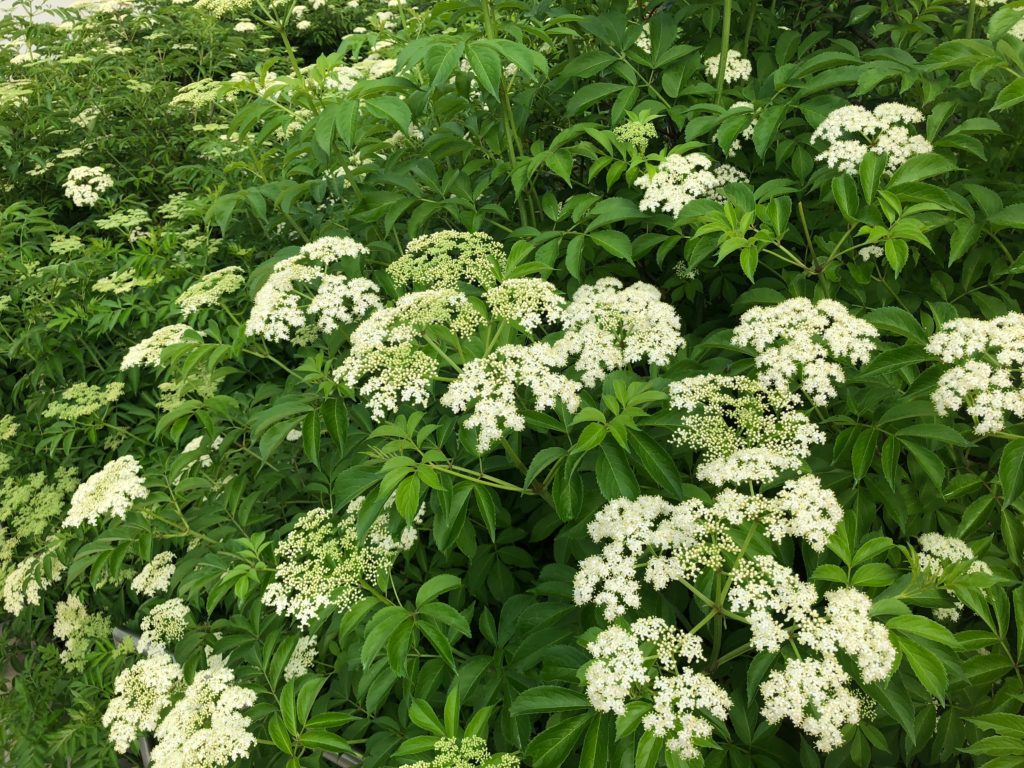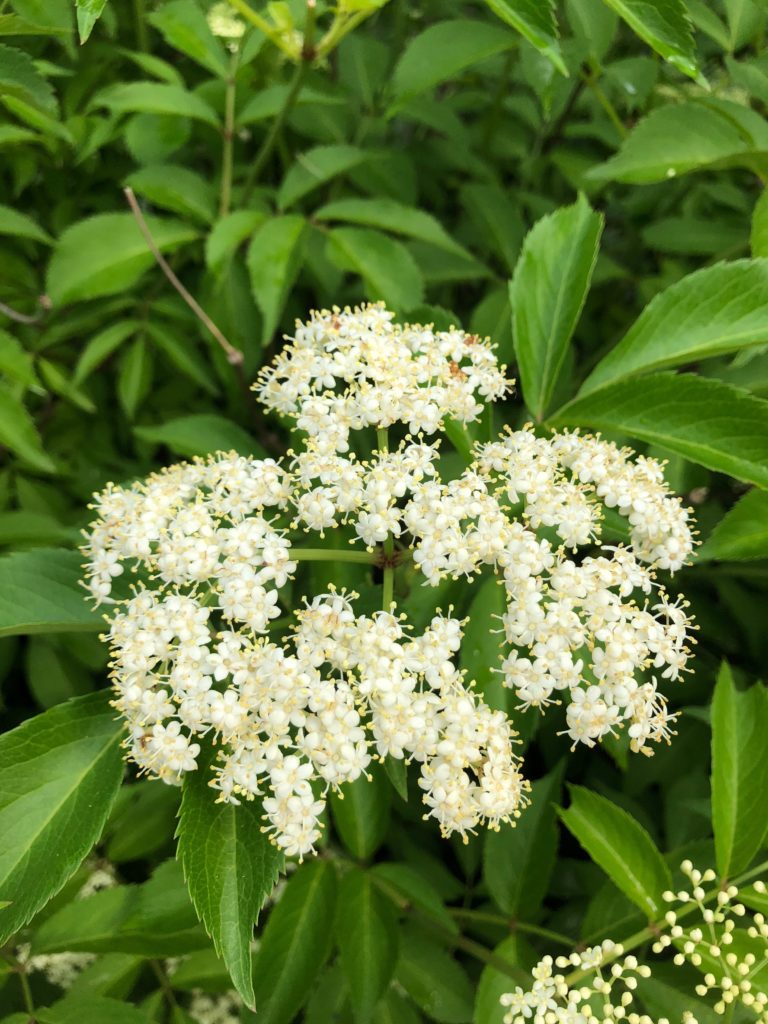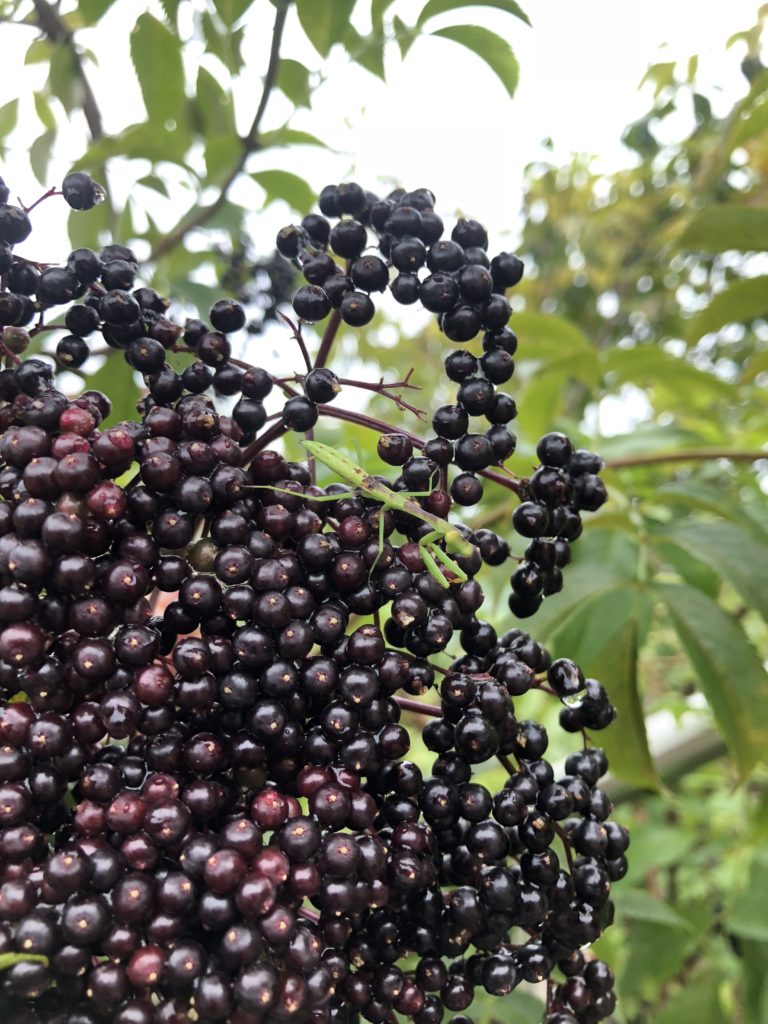
What’s in Bloom | Common Elderberry
- Common Elderberry (Sambucus canadensis) is a perennial deciduous shrub native to the eastern United States and Canada.
- Grows numerous long stems directly from the base, and spreads via rhizomes.
- Berries are a great food source for numerous birds and mammals, and are edible by humans.
Common Elderberry (Sambucus canadensis) is a perennial deciduous shrub native to the eastern United States and Canada. Numerous long stems grow directly from the base, arching over at the top. These 5-12 foot tall woody stems have light grayish or yellowish brown bark when young, which develops a warty appearance with age due to the formation of lenticels (air pores). Stems and branches tend to be relatively brittle and weak due to a wide section of pith, a central strand of spongy tissue. The young shoots and branches are light green and produce opposite compound leaves, which each have 2-4 pairs of opposite leaflets between 2.5-5 inches long and 1-2 inches across, and one terminal leaflet. Each compound leaf grows anywhere from 6-12 inches long, with light purplish-green stalks. The leaflets have an elliptic shape with serrations along their margins. They appear medium-dark green, with a light green lower surface. They are smooth along their tops, while the leaf undersides can be either smooth (glabrous), covered with fine hairs (pubescent), or slightly hairy along the major veins. The plants spread through rhizomes, sending out clonal offsets or suckers.

For 3-4 weeks in May-July, Common Elderberry plants produce panicles of flowers at the ends of their upper stems. Each panicle spans 3-10 inches across, with a flat top that becomes dome-shaped with maturity. The tiny white flowers are up to ¼ inch across with 5 lobes, 5 stamens, and an ovary with 3 styles. They are capable of self-fertilization, and have a sweet, musty fragrance. In late summer, the fertilized flowers ripen into dark purple-black drupe fruits ¼ inch across. Each tiny fruit contains 3-5 seeds, and the flower stalks turn purplish as the fruits mature. They are edible, with a sweet flavor and slightly bitter aftertaste, and are often used to make jams, pie fillings, and wine. Wildlife and humans alike enjoy the fruits.

Common Elderberry grows well in full-partial sun and moist, loamy soil. They are often found in moist woodland meadows, thickets, stream banks, ditches, disturbed wooded areas (such as powerline clearances), and pond edges. They can be used for naturalizing areas, where their habit of suckering may be appreciated.
Benefits to biodiversity | The flowers of Common Elderberry are visited by numerous pollinators, including numerous bee and beetle species. Little carpenter bees and mason bees tunnel into the soft pith of broken stems to create nests for their larvae. Numerous insects use the foliage and roots as food, including the Elderberry Longhorn, the Elder Borer Moth, the Elder Aphid, and Elder Thrips. Numerous birds feed upon the fruits, including Eastern Bluebird, Northern Cardinal, Cedar Waxwing and others. Mammals including the Fox Squirrel and Red Squirrel also eat the fruits. Cottontail Rabbits sometimes gnaw on the bark as an emergency winter food source.
Sources:
- https://www.illinoiswildflowers.info/trees/plants/cm_elder.htm
- https://www.wildflower.org/plants/result.php?id_plant=SANIC4
- https://www.missouribotanicalgarden.org/PlantFinder/PlantFinderDetails.aspx?taxonid=278942&isprofile=1&basic=Sambucus%20canadensis
- https://www.minnesotawildflowers.info/shrub/common-elderberry